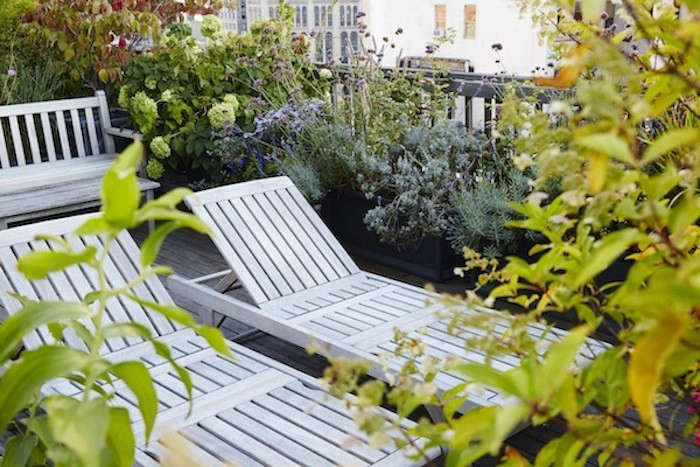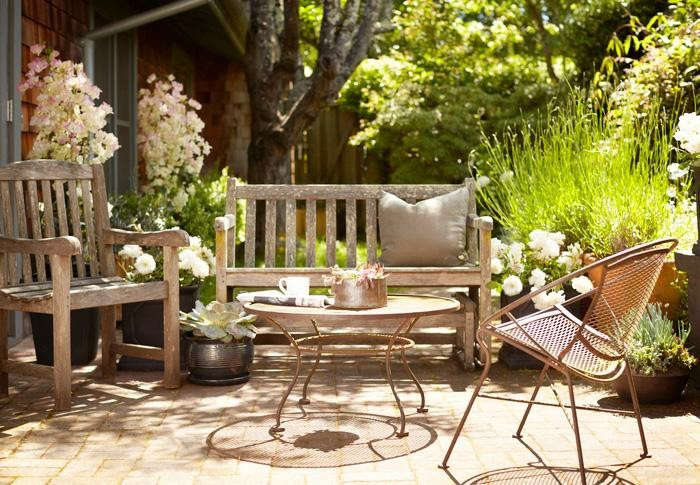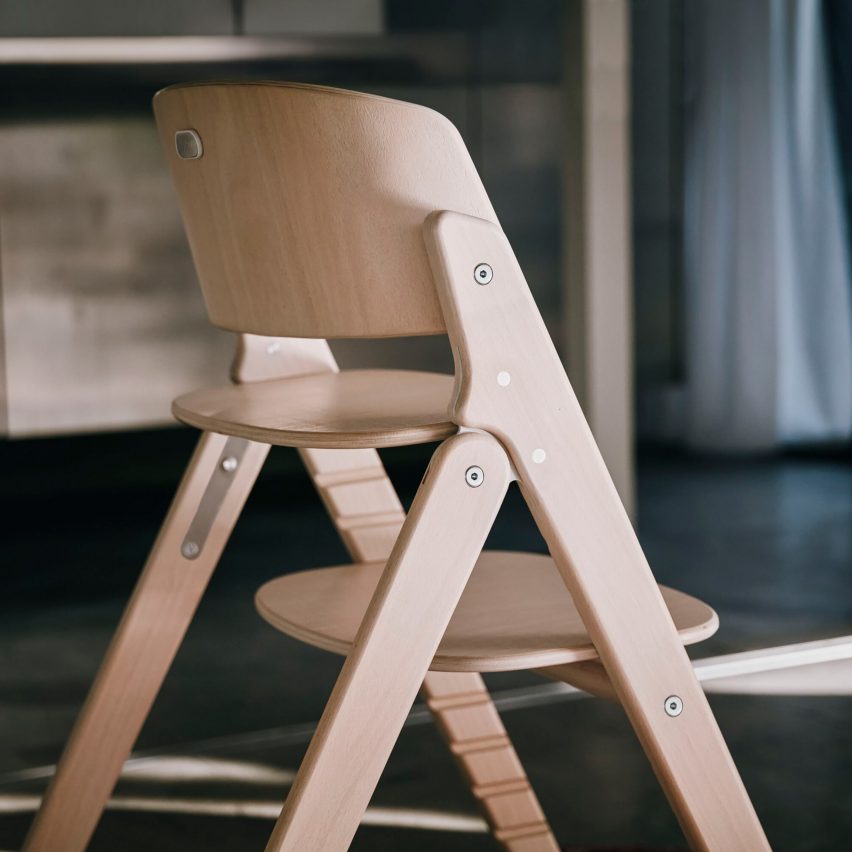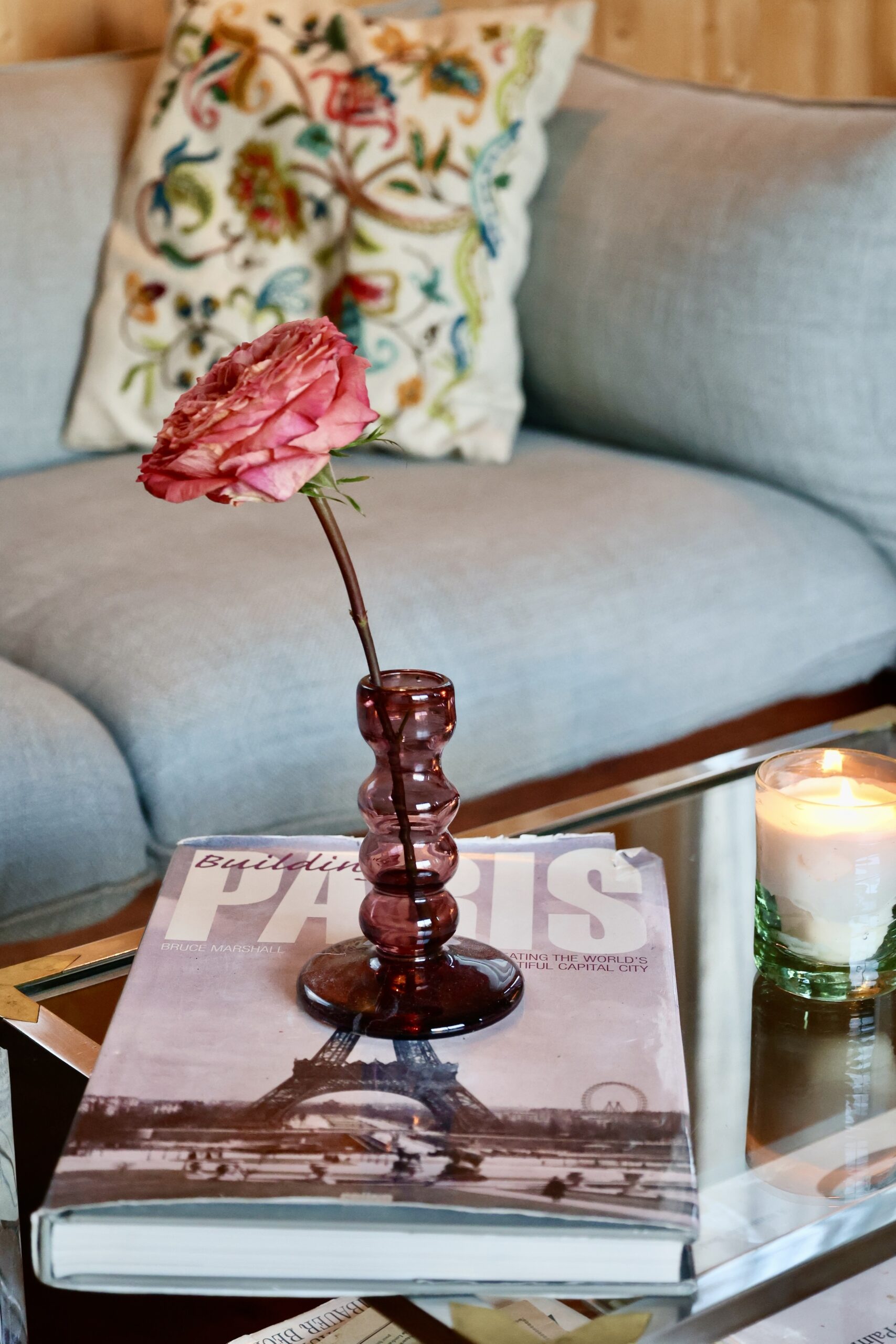Soon it will be time to drag the outdoor furniture from hibernation or, if you live in sunnier climes, add it to your spring cleaning list to get ready for dining al fresco. Don’t know where to start? Here’s our cheat sheet on how to clean and care for outdoor wood furniture.
(If your outdoor furniture is wicker, see our cleaning and care tips at Hardscaping 101: Wicker Furniture Care.)
Above: Weathered teak and metal outdoor furniture dusted off and ready for spring. (See how the Gardenista Team planted this patio.) Photograph by John Merkl.
Furniture Covers
 Above: A Veranda Lounge Chair Cover is available in four sizes at prices starting at $36.06 from Classic Accessories. Inexpensive generic outdoor furniture covers are also plentiful through Amazon, Home Depot, and other furniture retailers.
Above: A Veranda Lounge Chair Cover is available in four sizes at prices starting at $36.06 from Classic Accessories. Inexpensive generic outdoor furniture covers are also plentiful through Amazon, Home Depot, and other furniture retailers.
Protective covers are often available for specific lines of furniture, such as Brown Jordan’s covers and Custom Fit Outdoor Furniture Covers from Restoration Hardware, for an exact fit.
Weather-Resistant Woods
 Above: A teak chair in Designer Rose Uniacke’s Tranquil Terrace Garden. Photograph by Matthew Williams for Gardenista.
Above: A teak chair in Designer Rose Uniacke’s Tranquil Terrace Garden. Photograph by Matthew Williams for Gardenista.
The key to longevity of outdoor wood furniture is to start with good quality pieces made with wood that is appropriate for outdoor use. Teak, cedar, white oak, and even the less expensive acacia woods are naturally rot resistant and durable enough to withstand all kinds of weather conditions.
How to Clean Outdoor Furniture
 Above: Photograph by Erin Boyle.
Above: Photograph by Erin Boyle.
Light cleaning of wood outdoor furniture is best done with a cloth moistened with water or a mild soapy solution. For deeper cleaning at the start and finish of each season or in the instance of tougher stains or mold, you can scrub with a soft brush and a mix of water and dishwasher detergent or oxygen bleach. Scrub in the direction of the wood grain. Remove challenging stains by lightly sanding (again, with the direction of the grain) and rinsing the surface.
Silver Patina for Outdoor Furniture
 Above: Weathered teak loungers with a silvery patina tucked amid the greenery of Vanity Fair art director Julie Weiss’ Manhattan Garden. Photograph by Nicole Franzen for Gardenista.
Above: Weathered teak loungers with a silvery patina tucked amid the greenery of Vanity Fair art director Julie Weiss’ Manhattan Garden. Photograph by Nicole Franzen for Gardenista.
 Above: A well-loved set of outdoor wooden furniture has developed a mossy patina over time on Cape Cod. Photograph by Matthew Williams for Gardenista.
Above: A well-loved set of outdoor wooden furniture has developed a mossy patina over time on Cape Cod. Photograph by Matthew Williams for Gardenista.
The maintenance needs of outdoor wood furniture primarily depends on the look you’re after. Left untreated most woods develop a silver weathered patina, and because of their natural rot resistance, require little upkeep.
Sealants
 Above: From Scandinavian design house Skargaarden, a 79-inch teak Djuro Trestle Table has a slatted top and is $3,200 from Horne.
Above: From Scandinavian design house Skargaarden, a 79-inch teak Djuro Trestle Table has a slatted top and is $3,200 from Horne.
If you want to keep the wood looking like new, it can be treated with a sealant to preserve the color and provide added protection. Generally sealants need to be reapplied every few years depending on weather conditions and wear and tear. To do so you will need to wash, sand, and reapply the sealant. Consult the manufacturer for recommended products.
Care and Cleaning Tips
 Above: A wood dining set in Gardenista contributor Marie Viljoen’s former Brooklyn backyard. Photograph by Marie Viljoen, from A Movable Garden: Saying Goodbye to a Brooklyn Backyard.
Above: A wood dining set in Gardenista contributor Marie Viljoen’s former Brooklyn backyard. Photograph by Marie Viljoen, from A Movable Garden: Saying Goodbye to a Brooklyn Backyard.
- Always start with a light cleaning, sweeping surfaces as needed with a soft brush or cloth. Then assess if further care and cleaning is needed.
- When it comes to cleaning products for outdoor furniture, non-detergent liquid soap (think dish soap) is your friend. It will clean but not harm your furniture and its environs. For tougher stains and mildew, use water and white vinegar.
- Read the manual. Unless you inherit or purchase vintage pieces, outdoor furniture should come with instructions about care and feeding.
- Sunscreens and bird droppings should be cleaned off your furniture as soon as possible. They can be particularly damaging and cause permanent stains and corrosion.
- Consider covering your furniture when not in use for long periods of time (and during long bouts of inclement weather). Even if it can stand up to the elements, cleaning will extend its life and make maintenance easier after the outdoor season begins again. And, use breathable covers to avoid creating a mold incubator.
- If you live in an area with especially harsh winter weather, try storing your furniture indoors if possible.
N.B.: This post has been updated with new prices, photos, and links; it was first published April 2017.
Are you considering an outdoor furniture purchase? See some of our favorite pieces at:



